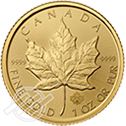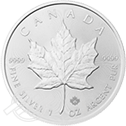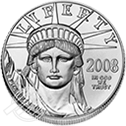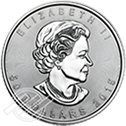How Much Is a Pound of Gold Worth?
You’ve seen pictures of big gold bars stacked high, gleaming in the light.
If you’re like many others, you might have wondered, “How much is a pound of gold worth?” Or even, “What would it be like to own one of those stacks of gold?”
For investors in gold, the peace of mind the precious metal provides can be priceless.
We will explore the specific monetary value of gold, including its per-pound value. We will also discuss why adding gold to your portfolio may be worth its weight—and a whole lot more.
Investing in Gold: Benefits and Considerations
Savvy long-term investors constantly seek to future-proof their portfolios.
And many turn to gold as a multi-faceted solution.
Why gold? Two of the biggest benefits that appeal to investors navigating the current economic landscape are:
- Gold is a hedge against inflation.
- Gold diversifies your portfolio.
Gold and Inflation
Inflation is the overall general upward price movement of goods and services in an economy.
In other words, inflation causes prices to be greater today than they were yesterday. It erodes the value of the dollar and decreases spending power.
Gold can act as a hedge against inflation.
Gold is priced in dollars. As it does with other goods and services, inflation drives up the price of gold.
It takes more dollars to buy gold during inflationary periods. And when you sell gold, you get more dollars back. In other words, gold is a store of value that helps protect the value of your portfolio from inflation.
Investors tend to move funds from other assets into gold during inflationary periods. This pressure on the supply and availability of gold can cause the price of gold to rise.
Gold and Your Portfolio
Physical gold diversifies your portfolio. There’s an old saying: “Don’t put all your eggs in one basket.” Unwittingly, that’s exactly what many investors do.
The stock market has 11 sectors, ranging from healthcare to technology. Conventional wisdom holds that investing in different sectors equates to having a balanced and diversified portfolio.
That is not necessarily the case.
Stocks are paper-based assets. They live on computer networks and only represent ownership. You can’t hold stocks in your hand. They are subject to counterparty risk, and ownership can disappear with the push of a button.
Times of stock market turmoil—such as during a recession—affects most, if not all, market sectors. The markets tend to drag as a whole.
Even a portfolio that includes stocks from all 11 sectors is still a portfolio of stocks and only stocks. It is a basket full of the same eggs.
That is not the case with gold.
Gold represents a completely different asset class. It is physical and tangible—you can hold it in your hands.
Gold is non-correlated to the stock market. Historically, the two have an inverse relationship. As stock market prices fall, the price of gold tends to rise.
Gold gives balance and can anchor a portfolio.
Balance and diversification are important, but remember that investing is never a sure thing. All investments involve risk.
Gold is no exception.
Over long periods of time, gold has proven to be a terrific investment. But in the short term, gold can experience price fluctuations.
Many investors adopt a “get it and forget it” mentality. They buy gold, store it safely within a Gold IRA, and practically forget it’s there. Investors often rest easy knowing their portfolio “insurance” is real, physical, tangible gold.
Factors Affecting Gold Prices
Global economic indicators, central bank policies, and supply and demand all factor into the price of gold.
Understanding these factors can give you a clearer view of how gold will anchor your portfolio.
Global Economic Indicators
Many consider gold a safe haven asset.
When markets hit turbulence or geopolitical upheaval sets in, investors expect safe haven assets to maintain or rise in value.
That generally holds true for gold, making it a go-to for those seeking a safe haven.
Central Bank Policies
The financial conditions that central banks create have an effect on gold prices.
Monetary policy sometimes misses the mark. Policies to spur economic growth, like low interest rates and an increased money supply, can have a negative economic effect once conditions change.
Excess money supply and low interest rates are the incubator for inflation. Easy money and credit can spur out-of-control spending, leading to inflation.
Inflation hunters turn to gold to protect their spending power and store the value of the dollar.
Market Demand and Supply Dynamics
This final factor is partly the result of the previous two. Investors monitor central bank policies and economic indicators to correctly time their gold purchases.
When global economic indicators cross with failing central bank policies, interest in the shiny metal tends to surge, putting pressure on existing supply. Low supply coupled with high demand lead to price increases.
Traditional cultural festivals and religious holidays also push demand for gold. Gift-giving and the resulting jump in gold adornment sales happens cyclically in many countries around the world, accounting for a large spike in demand.
How Much Is 1 lb. of Gold Worth? Calculating Gold Price
So, after surveying the geopolitical landscape, evaluating the monetary policies of central banks, and exploring supply-side economics, let’s revisit the question that started this all: How much is 1 pound of gold worth?
It depends on the day.
The price of gold is transparently broadcast through its “spot price.” The spot price is an asset’s current market price—or what you could pay on the spot—for a given commodity (such as gold).
A variety of websites track the up-to-the-minute spot price of gold.
The gold market is composed of buyers and sellers all looking to get the best price.
Buyers submit bids (what they’re willing to pay) for gold. Sellers submit asks (the price at which they’re willing to sell gold). When more buyers want to buy than sellers want to sell, the price increases. When sellers have more gold than buyers want to buy, the price decreases.
Spot price is set by trading activity (supply and demand), economic factors, and futures contracts.
Calculating the Gold Price Per Pound
So, how do I compute the pound of gold price? Just as you’d compute the price of anything sold in ounces, but with a twist.
Most think a pound consists of 16 ounces. And it generally does, but not when it comes to gold.
Gold is measured in troy ounces. A troy ounce is approximately 10% heavier than a common ounce, and 12 troy ounces equals 1 pound of gold.
So, you would use the following formula to calculate the price of gold per pound:
Gold spot price x 12 troy ounces = the price of 1 pound of gold
So, how much is 1 pound of gold worth as of late 2023? Nearly $24,000.
Different Forms of Gold and Their Worth
Since the times of ancient civilizations, societies have used gold for various purposes. The non-corrosive and malleable metal has taken many forms, with varying levels of purity depending on the use.
Gold’s purity is measured in karats. Karat marks are determined by how much other metal is alloyed with gold. The most common karat marks are:
- 24 karat: Pure gold. No other metals are mixed with the gold.
- 22 karat: 91.7% pure gold, 5% silver, 2% copper, 1.3% zinc
- 18 karat: 75% gold, 15% silver, 10% copper
- 14 karat: 58.3% gold, 30% silver, 11.7% copper
- 10 karat: 41.7% gold, 52% silver, 6.3% copper
In the U.S., 10 karat is the minimum fineness to be considered gold.
The spot price relates to 1 troy ounce of 24 karat pure gold. It does not take into account the costs of converting the gold into any product.
Gold coins, gold bars, and gold jewelry are the three most common uses for gold.
Investors and collectors of gold coins and bars typically choose 99.5% or higher concentrations of gold.
Those who hold gold in their Gold IRA know that IRA-eligible gold bars and coins must meet a minimum fineness of 99.5%. A bar will typically have its fineness stamped on the face. Government mints publish the fineness of their gold coins.
Gold jewelry will typically have a karat mark stamped on the clasp of a necklace or inside of a ring. Most gold jewelry is 14 karat, because of its durability and affordability.
Whether part of a bar, coin, or piece of jewelry, 24 karat gold has a beautiful and deep gold color. It is soft in comparison to 14 karat gold and can be susceptible to nicks, dents, and scratches.
Owners of an individual retirement account pay the pound-of-gold price with funds already allocated for investing.
The precious metals IRA is a self-directed account that includes IRA-eligible bars and coins as an investment option.
You can transfer all traditional IRA accounts into a Gold IRA. If you are 59 ½ with a 401(k), or own a 401(k) from a previous employer, you can roll over that account into a Gold IRA.
Both the IRA transfer and the 401(k) rollover are tax-free and penalty-free.
The IRS has strict guidelines on the quality, purity, and origin of eligible bars and coins. To be considered for the IRA, precious metals must meet the following standards:
- Gold must be at least 99.5% pure.
- Coins must be government-minted.
- Coins must be uncirculated and in perfect physical condition.
- Bars must originate from companies traded publicly on exchanges such as the COMEX.
Jewelry, ingots, and vintage collectible gold are not eligible for the Gold IRA.
Using Gold as an Investment Option
Gold can help your portfolio survive the ups and downs of long-term investing.
As a foundation for your portfolio, your physical gold is there—and will always be there—to balance, diversify, and preserve the value of your investment dollars.
To acquire the finest investment grade gold bars and coins, call the experts at Advantage Gold.
We are the highest-rated precious metals investment firm and have been guiding investors through the gold ownership process for almost a decade.
We will walk you through the precious metals IRA application or directly deliver gold to your doorstep.
Owning gold is easier than you think.
Give us a call today, or click the link and we’ll call you.
Tags: 1 lb of gold price, how much is 1lb of gold worth, pound of gold price


